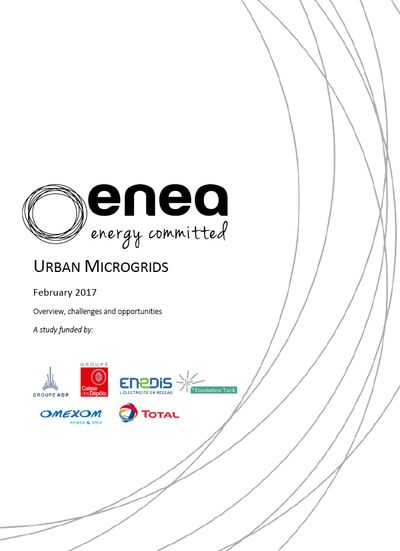Urban Microgrids: overview, challenges and opportunities

Blunomy (Enea Consulting) published the results of a study on urban microgrids conducted in partnership with the Group ADP, the Group Caisse des Dépôts, ENEDIS, Omexom, Total and the Tuck Foundation. The study defined an urban microgrid, the value brought by a microgrid in different contexts based on real case studies, and the upcoming challenges that microgrid stakeholders will face (regulation, business models, technology).
The electricity production and distribution system, as the backbone of an increasingly urbanised and energy dependent society, is urged to shift towards more resilient, efficient and environmentally friendly infrastructure. Decentralisation of electricity production into densely populated areas is a promising opportunity to achieve this transition.
A microgrid enhances local production through clustering electricity producers and consumers within a delimited electricity network; it has the ability to disconnect from the main grid for a limited period of time, offering an energy security service to its customers, for example, during grid outages. However:
The islanding capability is an inherent feature of the microgrid concept that leads to a significant premium on electricity costs, especially in a system highly reliant on intermittent electricity production. In this case, a smart grid, with local energy production and no islanding capability, can be customised to meet relevant sustainability and cost savings goals at lower costs
For industrials, urban microgrids can be economically profitable in presence of high share of reliable energy production and thermal energy demand
Microgrids face strong regulatory challenges that should be overcome for further development
Whether islanding is or is not implemented into the system, end-user demand for a greener, more local, cheaper and more reliable energy, as well as additional services to the grid, are strong drivers for local production and consumption. In some specific cases, relevant business models can turn into viable commercial projects provided the constraints enforced by regional regulatory frameworks are adapted.